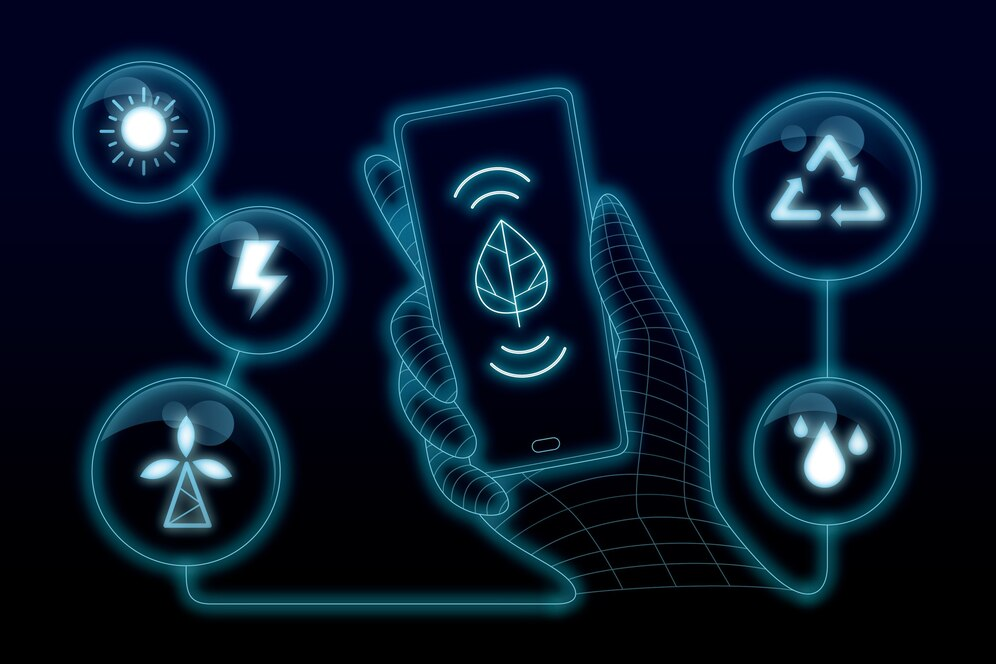How Sim Connectivity Technology Transforming IoT Globally?
-
December 25, 2023
-
7 min read

With over 13 billion IoT devices connected worldwide, we’re witnessing a profound transformation in global technology landscapes. By 2030, experts predict the number to almost double to 25.4 billion.
To maintain the reliability and security of these connected devices, they require reliable and secure connectivity that traditional internet connections can’t always provide. This is where SIM connectivity technology comes in.
Understanding IoT SIM Cards
An IoT SIM card or M2M SIM card (machine-to-machine) is a subscription-based service that provides cellular connectivity for connected devices. The main benefit of this technology is longer-range coverage compared with Wi-Fi and other internet connections.
Using embedded SIMs (eSIM) or physical SIM cards, IoT devices remain connected even when there’s no access to a fixed connection like Wi-Fi or Ethernet cables.
Difference between Traditional SIMs & IoT SIMs
While traditional SIMs are designed for human communication, like calls and messaging, IoT SIMs are engineered for machine-to-machine (M2M) communication, offering robust connectivity and superior power efficiency.
| Parameters | Traditional SIM | IoT SIM |
| Purpose | Designed for human communication (calls, texting, etc.). | Engineered for machine-to-machine communication. |
| Power Consumption | High | Low |
| Connectivity | Limited Coverage | Wide-range coverage |
| Security | Standard | Enhanced |
| Flexibility | Fixed to a single carrier | Carrier flexibility |
| Data Transfer Rate | High | Varies based on the use case |
IoT SIM Cards Form Factors
IoT SIM cards come in three different form factors:
eSIMS
eSIMs are small chips embedded into the device that do not require a physical card to be inserted. This technology is ideal for mobile devices such as smartphones and tablets.
Embedded SIMs (eUICC)
Embedded UICC (Universal Integrated Circuit Cards) cards are embedded into the device and connected to an eSIM. This technology is common in enterprise devices, such as wearables, point-of-sale terminals, and other industrial equipment.
Removable SIMs
Removable SIM cards are inserted into the device for activation. This is the most common form factor used in various devices, such as vehicles, smart home appliances, and medical equipment. Mini Sim or 2FF (25mm x 15mm), Micro Sim or 3FF (15mm x 12mm), and Nano Sim or 4FF (12.3mm x 8.8 mm) are all examples of removable cards.
Connectivity Technologies used in IoT SIM
1. Wi-Fi
Wi-Fi, also known as Wireless Fidelity, is a popular choice for Internet of Things (IoT) connections, accounting for 31% of all connections. It provides a convenient and cable-free way for devices to transmit data over the internet. This makes it a fast and easy option to implement in IoT environments.
2. Bluetooth
Bluetooth, a wireless technology with a limited range, accounts for 27% of all Internet of Things connections. It is ideal for connecting devices that are close together, such as linking smartphones to fitness trackers or tablets to other IoT gadgets.
3. Cellular Networks
Cellular networks, including 2G, 3G, 4G, 5G, LTE-M, and NB-IoT, comprise approximately 20% of all IoT connections. According to market projections, the global market for 5G services is anticipated to expand significantly from USD 107.0 billion in 2022 to US $331.1 billion by 2027. This growth is expected at a compound annual growth rate (CAGR) of 25.3% from 2022 to 2027. 5G and other IoT connectivity technologies are essential, providing reliable and wide-ranging coverage globally.
4. Zigbee
Zigbee is a connectivity technology known for its low-power mesh networking. It enables efficient data transmission among IoT devices. Zigbee’s market worth was valued at $3.84 billion in 2022, and it might reach $7.14 Billion by 2029. The network consists of three components:
- Zigbee coordinator (ZC): serves as the central hub and stores vital information.
- Zigbee routers or repeaters (ZR): responsible for transmitting messages between devices and an app.
- Zigbee end devices (ZEDs): represent the actual IoT devices.
5. LoRaWAN
LoRaWAN is a type of low-power wide-area network (LPWAN) technology. It enables long-range communication between IoT devices and base stations. It is often used with other LPWANs such as Sigfox and Ingenu.
6. Ethernet
Ethernet, the fundamental wired connectivity technology, provides a reliable link for IoT devices. It’s the same way your computer connects to the internet using an Ethernet cable. This solution ensures fast data transfer with minimal or no delays.
Choosing an Ideal IoT SIM Card Provider: Key Factors to Consider
Opt for the top IoT SIM card operator by looking into the following factors:
- Coverage area: When selecting an IoT SIM card operator, the coverage area is crucial. Opt for a provider that offers the necessary coverage. Some solutions provide global coverage but with limitations on the number of countries.
- Data transfer rate: IoT SIM card operators provide various data transfer rates. IoT supports connectivity options such as 2G, 3G, 4G, 5G, NB-IoT, and LTE-M, each with significant differences. Choose an operator that provides the best connectivity option. Prioritize suitability.
- Pricing and plans: Find an operator that offers flexible pricing options for your IoT project. Some operators have pay-as-you-go models, while others provide custom pricing plans based on your needs.
- Reliability: Make sure the operator you choose offers stable and reliable connectivity.
- Security: When choosing an operator, prioritize those implementing security measures like data encryption and secure data transmission protocols. Also, inquire about any extra charges for advanced security features.
- Scalability of your IoT Connectivity Partner: When choosing an IoT provider, it’s important to consider scalability. Ensure the provider can handle your growing number of devices and offers flexible pricing plans.
- IoT Data Plans and Pricing: To choose a SIM card provider, evaluate their data plans and pricing options. Find plans that match your data needs and budget. Consider factors like data limits, coverage charges, and any additional fees or discounts.
- IoT SIM Management Platform: When evaluating the SIM management platform provided by the provider, look for a robust platform that offers key features. These features should include remote activation and deactivation of IoT SIM cards, real-time monitoring, usage tracking, and efficient management of multiple IoT SIMs.
- Customer Support from IoT experts: When choosing a provider, think about the quality of their customer support. Prompt assistance and technical support are important for resolving and addressing connectivity challenges.
- IoT Roaming Capability: Ensure your devices have reliable roaming capabilities if they operate in multiple regions or countries. This allows for seamless connectivity and uninterrupted communication for your devices.
- Integration and APIs: To integrate with your current systems or platforms, check if the provider offers APIs or integration options for seamless integration with your IoT infrastructure.
- Branding of your IoT SIMs & white label options: Device manufacturers often encourage using white-label IoT SIMs to enhance their branding. It is crucial to confirm whether your IoT SIM card can accommodate such requests.
- Customized plan for IoT SIM cards: Consider paying for the connectivity based on your IoT application requirements. Most IoT applications don’t require high data transfer rates, bandwidth, or capacity. By selecting the right plan, you can reduce costs significantly.
- Pool pricing: Choose a flexible or fixed pool for your IoT SIM card connectivity based on your application’s requirements. Consider the needed flexibility to make the right decision.
Usages of IoT SIM Cards in Various Industries
IoT SIM cards are revolutionizing countless industries by facilitating reliable machine-to-machine communication such as:
- Healthcare: IoT SIM cards are significant in telemedicine and patient monitoring systems.
- Manufacturing: In the manufacturing sector, IoT SIM cards facilitate real-time tracking of equipment performance and production schedules. This reduces downtime, optimizes efficiency, and ensures timely maintenance.
- Logistics: Internet of Things SIM cards revolutionize the logistics sector by enabling real-time asset tracking, monitoring cargo conditions, and ensuring optimal route planning.
- Automobile: In the automobile sector, IoT SIM cards enable various features such as GPS navigation, vehicle diagnostics, and driver assistance systems. This helps to reduce fuel costs and improve safety on roads.
- Financial Services: IoT SIM cards enable the financial services sector to provide faster and more secure transactions. This allows for real-time fraud monitoring and seamless customer authentication.
- Energy And Utilities: SIM connectivity technology enables smart energy grids and efficient resource management in the energy and utilities sector. This helps reduce costs while increasing efficiency and reliability.
Conclusion!
IoT SIM cards are revolutionizing industries and reshaping e-commerce. Consider the Magento 2 platform: it allows businesses to showcase featured products on the homepage. This catches customers’ attention when they land on the site, enhancing user experience and driving sales.
The transformative power of IoT SIM cards is reshaping industries, optimizing processes, and driving innovation. Embrace this change today, and propel your business towards a future of endless possibilities. Check out Airtel’s IoT SIM services to maximize the benefits of SIM connectivity features.
 Share
Share








